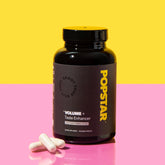Skeet is a term that often appears in conversations related to men’s health and sexual well-being, though it carries a range of meanings depending on its context and origin. In this article, we’ll explore the term “Skeet” from multiple angles: its background, relevance in popular culture, its potential connection to physiological processes, and its place in discussions of sexual health. Whether you’re curious about the slang’s origins, the anatomy involved, or the myths that float around, this comprehensive explanation will help shed light on the subject. Read on to learn more.
Table of Contents
- What is Skeet?
- What is the Origin of the Term “Skeet”?
- Why is Skeet Used in Men’s Health Conversations?
- The Physiology Behind Skeet
- How Often Does Skeet Occur?
- What is the Role of Hormones in Skeet?
- Are There Any Health Effects Associated with Skeet?
- Common Myths and Facts About Skeet
- Frequently Asked Questions (FAQs) About Skeet
- When Should I Talk to a Doctor?
- References
What is Skeet?
The term “Skeet” has been used in various contexts, including slang references, lyrical content in music, and more recently in some circles of men’s health discussions. While its mainstream origin is often tied to pop culture—particularly rap and hip-hop lyrics—over time it has also been adopted in colloquial speech to refer to ejaculation or the act of ejecting semen during orgasm.
Because the term is considered slang, it doesn’t usually appear in standard medical literature under that name. However, it has steadily become more recognized in casual discourse, especially in online forums focusing on men’s sexual health, libido, and reproductive discussions. The word “Skeet” can be jarring to those unfamiliar with it because of its blunt or casual nature, but it represents a phenomenon that is essentially the culmination of the male sexual climax.
By connecting this slang term to physiological processes, men often navigate conversations about sexual function in a more relaxed manner. Understanding Skeet goes beyond mere vocabulary; it delves into pivotal aspects of health, including hormone regulation, reproductive capacity, and mental well-being. With clearer awareness of what Skeet truly entails, individuals can make more informed decisions about their sexual health and establish better communication with healthcare professionals and partners.
What is the Origin of the Term “Skeet”?
The exact origin of the term “Skeet” is somewhat elusive, primarily because slang often evolves through cultural exchange, social media buzz, and local jargon. Many trace its popularization to American hip-hop culture in the 1990s and early 2000s. In particular, certain rap lyrics used “Skeet” as a quick, punchy way to describe ejaculation, echoing the spontaneous nature of the act it refers to.
Outside of music, the term has stayed relevant through internet memes and viral videos. Over time, it has transcended its niche beginnings and entered wider public consciousness. This mainstream acceptance has simultaneously broadened its definitions. In some communities, “Skeet” is simply an exclamation of excitement, while in others, it remains more explicitly tied to sexual contexts.
From a linguistic standpoint, “Skeet” is a fascinating example of how words evolve and get woven into everyday language. As it gains traction, multiple interpretations emerge. Nevertheless, for the purposes of men’s health, the usage most relevant here is that which pertains to ejaculation or the release of semen. As is the case with many slang expressions, caution is advised when using “Skeet,” as it can be considered crass or inappropriate depending on the audience. However, among consenting adults or in medical contexts with a wink to pop culture, the term can serve as a straightforward descriptor.
Being aware of how certain slang terms transition from marginal vocabularies to more mainstream usage helps us appreciate the fluid nature of language. It also emphasizes the importance of clarity: openly understanding and defining such terms can encourage healthier dialogues around important, yet often stigmatized, topics like sexual function and ejaculation.
Why is Skeet Used in Men’s Health Conversations?
Men’s health forums and websites frequently discuss sensitive topics such as libido, stamina, and overall sexual well-being. In these informal digital gathering places, slang terms can sometimes feel more approachable than formal medical jargon. “Skeet” is one such term that has found its way into these discussions. By using casual language, members of these communities may feel more comfortable sharing personal experiences, asking questions, or seeking advice that they might otherwise avoid in a clinical or formal setting.
Furthermore, employing slang terms may help break down taboos. Discussing such intimate aspects of health can be intimidating for many individuals. Scripts or acronyms such as “POIS” (Post-Orgasmic Illness Syndrome), “PE” (Premature Ejaculation), or “DE” (Delayed Ejaculation) already dominate parts of men’s health discourse. Adding “Skeet” to the conversation simply provides another layer of accessible language, helping people engage more freely. When someone can easily say, “Hey, I have an issue with my Skeet,” the perceived barrier to discussing sexual health issues might be lower.
It’s important to remember, though, that while slang can be helpful initially, medical evaluation and terminology are critical when a more accurate understanding is needed. If an individual perceives complications—whether related to the volume of ejaculate, the force of ejaculation, possible pain, or changes in libido—professionals may require specific terminology and detail to identify underlying issues. Ultimately, “Skeet” offers an entry point, but a balanced approach that merges informal discussion with professional insight can be most effective for overall health outcomes.
The Physiology Behind Skeet
When we talk about “Skeet” as ejaculation, we’re primarily referring to a physiological process involving the male reproductive system. Understanding the steps leading to ejaculation can highlight why men’s health experts ensure that discussions on normal function and potential issues remain front and center.
The process generally includes:
- Arousal and Sexual Stimulation: This phase triggers a cascade of hormonal releases, including testosterone, which heightens sexual excitement.
- Semen Production: The seminal vesicles, prostate gland, and testicles contribute fluids and sperm that collectively form semen. The composition includes sperm, fructose, and other enzymes that support sperm health.
- Seminal Emission: Once sexual arousal hits a critical threshold, emission begins. The vas deferens moves sperm toward the urethra while the seminal vesicles and prostate contribute their secretions.
- Ejaculation: Coordinated muscle contractions in the pelvic area force semen out through the urethra. This is often accompanied by orgasm—the peak sensation of sexual pleasure.
Ejaculation generally happens in two phases: emission (positioning semen in the posterior urethra) and expulsion (muscular contractions pushing semen out of the urethra). The slang term “Skeet” covers this entire process but places emphasis on the forceful ejection aspect. This moment can also be associated with a rush of endorphins, creating sensations of pleasure and relaxation.
For most men, a typical ejaculation isn’t harmful or uncomfortable, but variations can occur. Some men experience intense contractions, while others may note lesser force or volume. Within reasonable ranges, these differences are normal. However, abrupt changes in ejaculate potency, volume, or sensation can sometimes signal health issues—providing a strong rationale for vigilance and medical consultation when necessary.
How Often Does Skeet Occur?
There is no universal “best” frequency for ejaculation—it varies significantly among men, influenced by age, libido, stress levels, overall health, and personal preference. In everyday language, men might say, “I Skeet frequently,” or “I rarely Skeet,” referring to how often they experience ejaculation either through partnered sex or masturbation.
Healthy ejaculation frequency can range from daily to just a few times per month. Multiple studies suggest that moderate ejaculatory frequency can have potential advantages, such as improved prostate health. Conversely, extremely high frequency could lead to temporary soreness or lower sensation due to overstimulation, while extremely low frequency might leave some individuals feeling tense or frustrated, depending on their libido levels. These observations are general guidelines rather than strict rules. Ultimately, a man’s level of comfort, satisfaction, and well-being should help him determine what frequency feels right.
If a significant fluctuation in ejaculatory frequency occurs—particularly if accompanied by lower libido, emotional changes, or physical symptoms like pelvic pain—it may be wise to consult a healthcare provider. In many cases, lifestyle adjustments such as exercise, improved nutrition, and stress management can influence the libido and, consequently, ejaculation patterns.
What is the Role of Hormones in Skeet?
Hormones are at the heart of sexual function, and testosterone is arguably the most relevant hormone when it comes to ejaculation, libido, and overall male sexual health. Testosterone is produced predominantly in the testicles and governs many facets of male physiology: muscle mass, bone density, red blood cell count, and of course, sex drive.
During sexual arousal, testosterone levels often peak, fueling both physical and psychological readiness. Although “Skeet” as a slang term doesn’t explicitly reference hormonal pathways, the process of ejaculation is deeply connected to these cycles. When testosterone levels are low—a condition known as hypogonadism—men might face reduced libido, diminished ejaculate volume, or less intense orgasms.
Estrogen, despite being viewed as the “female hormone,” also plays a part in regulating male reproductive function. A balanced estrogen-to-testosterone ratio is essential for optimal sexual health. Similarly, prolactin and other hormones can influence the refractory period (the recovery phase between orgasms). Thus, while Skeet may be a short, succinct term, the biological pathways behind it are complex, highlighting the importance of a holistic approach to men’s health.
Are There Any Health Effects Associated with Skeet?
When discussing the potential health effects of ejaculation, one might wonder if there are direct benefits or risks. In general, moderate and consistent ejaculation is seen as a normal and healthy bodily function. Some studies have proposed that regular ejaculation may help lower stress, improve mood, and potentially reduce the risk of certain prostate issues. However, these correlations can be influenced by numerous lifestyle factors and should be examined in broader context.
On the flip side, excessive ejaculation or overly forceful episodes sometimes lead to temporary discomfort, including:
- Pelvic Soreness: Especially if frequent sexual activity doesn’t allow adequate recovery.
- Fatigue: An intense sexual session can burn calories and lead to temporary tiredness.
- Emotional Variations: Some individuals experience post-climax anxiety or shifts in mood, commonly referred to as post-coital blues.
Chronic or sudden changes in ejaculatory patterns—whether in amount, force, or associated pain—should be discussed with a healthcare provider. Conditions like retrograde ejaculation (where semen enters the bladder instead of exiting the penis) or anejaculation (absence of ejaculation) are less common but can indicate underlying medical concerns. Remember, open communication with a medical professional is key to ruling out any bigger issues, whether you refer to it as “Skeet” or standard medical terminology like “ejaculation.”
Common Myths and Facts About Skeet
Sorting the myths from the facts can be tricky, especially when you’re dealing with slang. A few common misconceptions and truths about Skeet include:
-
Myth: Too much Skeet is harmful.
Fact: While excessive ejaculation can cause temporary discomfort, on its own it’s not typically harmful unless it leads to pain or chronic fatigue. -
Myth: Ejaculating daily depletes sexual energy.
Fact: Some men ejaculate daily without negative consequences, while others prefer more rest between sessions. Individual variation is key. -
Myth: The volume of Skeet is always the same.
Fact: Ejaculate volume varies due to hydration levels, frequency of sexual activity, and overall health. -
Myth: Low ejaculation frequency impairs fertility.
Fact: Occasional low frequency likely won’t significantly impact long-term fertility, but chronic changes in semen parameters should be evaluated by a professional.
By distinguishing fact from fiction, men can better tune in to their bodies and avoid unnecessary anxiety. If any concerns do arise—be they myth-based or otherwise—seeking reliable information and, if necessary, medical advice helps maintain a healthy perspective.
Frequently Asked Questions (FAQs) About Skeet
Can “Skeet” Be Used in a Clinical Setting?
In most medical environments, professionals use the term “ejaculation” rather than “Skeet.” That said, if you feel more comfortable speaking in slang, a healthcare provider can usually adapt. Clear communication is what truly matters.
Is It Normal to Experience Pain When I Skeet?
No, persistent pain during ejaculation—or any part of sexual activity—usually warrants a medical check. Occasional discomfort might result from friction, infections, or mild irritation, but consistent pain could indicate prostatitis, urethral issues, or other underlying conditions.
Does Diet Affect Skeet Volume?
Yes, a balanced diet that includes sufficient hydration, protein, vitamins, and minerals can influence semen production. While no single food can drastically alter volume or consistency overnight, general wellness practices can have cumulative benefits.
Do Men Always Ejaculate the Same Amount?
Not necessarily. The amount can vary depending on recent sexual activity, hydration, stress, and even age. Random fluctuations are often normal, but noticeable, persistent changes may be worth a conversation with a healthcare provider.
Is Skeet Related to Sexual Performance?
Skeet, as a slang term for ejaculation, can be one aspect of overall sexual performance. However, performance is determined by a range of factors—physical stamina, emotional readiness, arousal levels, and more. The force or volume of ejaculation in isolation doesn’t necessarily equate to “better” or “worse” performance.
Should I Be Concerned About My Skeet Frequency or Quality?
If you notice abrupt and significant changes in your ejaculatory habits—reduced volume, increased pain, or changes in force—making an appointment with a healthcare provider is advisable. Minor fluctuations can be normal, but ongoing issues deserve professional attention.
Is There a Way to Increase Skeet Force or Volume?
Some men explore techniques like pelvic floor exercises (Kegels), improved hydration, and dietary adjustments to support healthy ejaculation. However, each person’s baseline is different. What works wonders for one individual may have minimal impact on another.
Can Sexual Habits in Younger Years Affect Skeet Later?
Generally, moderate sexual activity—both in youth and adulthood—doesn’t harm long-term ejaculatory function. Extreme practices or injuries might have lasting effects, but for most, your body adapts over time.
Does Stress Impact How I Skeet?
Stress, anxiety, and other mental health factors can affect libido and sexual function broadly. Stress can reduce blood flow, disrupt hormone balance, and even prolong or shorten the time to climax. Thus, managing stress often has indirect benefits for healthy ejaculation.
Why Do Some Men Experience a Dribbling Effect Instead of a Forceful Skeet?
A “dribbling” style ejaculate can occur for a variety of reasons, ranging from certain medications and lifestyle factors to potential prostate issues. Occasional variation is typically normal, but if the change is sudden or concerning, check with a healthcare provider.
When Should I Talk to a Doctor?
Men often wonder at what point they should involve a healthcare provider in conversations about sexual function. While “Skeet” may remain purely slang to some, any significant or persistent changes in ejaculatory force, volume, comfort, or frequency may warrant professional advice. Situations that justify a visit to a doctor include:
- Unexplained pelvic or genital pain.
- Visibly altered appearance of ejaculate, such as blood or a dramatic color change.
- Complete inability to ejaculate despite normal arousal.
- Unusual patterns in libido or general hormonal imbalance signs (e.g., fatigue, weight fluctuations, depression).
Communicating openly about symptoms is the best path to diagnosis and treatment. Many mild conditions can be turned around quickly with medication, lifestyle modifications, or pelvic floor therapy. More severe conditions might require specialized intervention but identifying issues early often leads to simpler solutions.
References
- Harvard Medical School. (2020). Prostate Health and Ejaculatory Frequency.
- Urban Dictionary. (Various). “Skeet” Slang Entries.
- American Urological Association. (2021). Ejaculation Overview.
- International Society for Sexual Medicine. (2021). Pelvic Floor Exercises and Male Sexual Health.


































